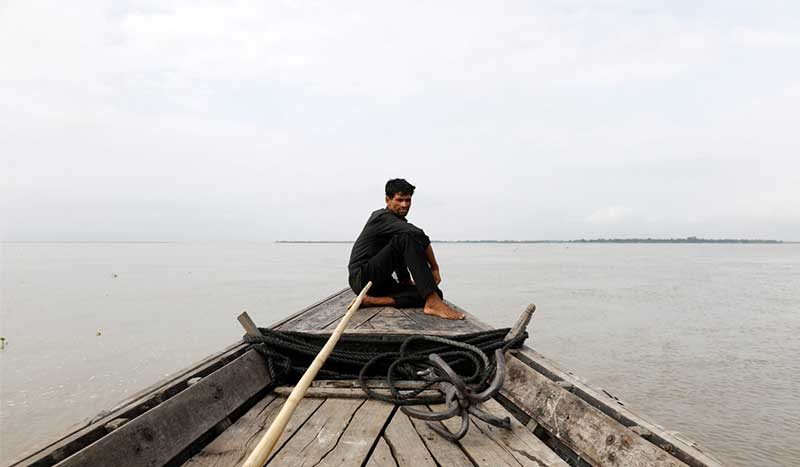Published in East Asia Forum on Tuesday 17 September 2019
The World Bank estimates Bangladesh–India bilateral trade potential to be US$16.4 billion. The actual trade figure for the 2019 fiscal year was US$9.85 billion. This gap captures the prevailing economic relationship between the two countries and represents what could be if the attendant challenges were adequately addressed.

Many commentators are concerned about Bangladesh’s significant bilateral trade deficit with India of US$7.35 billion in fiscal year 2019. The deficit has been on a steady rise.
Bangladeshi traders often complain about non-tariff barriers (NTBs) when exporting to India. India has imposed anti-dumping duties and countervailing duties on Bangladeshi exports. These have had a detrimental impact on Bangladesh’s exports to India. A lack of adequate trade facilitation is the most important NTB for operators on both sides.
Imports from India are mostly raw materials for Bangladesh’s export-oriented sectors, particularly the apparel industry which produces ready-made garments (RMG) for export. Notably, 87 per cent of Bangladesh’s exports to the US market are RMG items which are, in part, made of cotton, yarn and fabrics imported from India. Thanks to this, Bangladesh has a significant trade surplus with the United States — US$6.1 billion in 2018. But reducing the bilateral trade deficit with India remains a major point of contention in Bangladeshi policy circles and public opinion.
Bangladesh has not been able to take advantage of India’s growing import market. Indian imports exceeded US$400 billion in 2018. India is importing many items from the global market but not from Bangladesh. Bangladesh is exporting these same items to the global market but not to India. Policymakers must remove the obstacles that impede higher bilateral trade flows through appropriate policies.
About 50 per cent of the bilateral trade between Bangladesh and India takes place through land ports. The border points are not crossing points — they are control and checkpoints. Goods need to be unloaded and reloaded in ‘no man’s land’ leading to delays and cost-escalation. In the absence of mutual recognition agreements, goods wait for several days until inspection results come from laboratory facilities in distant testing centres.
The costs of transporting goods from Dhaka to Delhi are significantly higher than those from Dhaka to European and US ports. The efficiency of trade connectivity depends on how effective transport, investment and logistics connectivity are. As part of the South Asia Free Trade Area (SAFTA) agreement, India has offered duty-free and quota-free (DF-QF) market access to Bangladesh. But Bangladesh has not been able to take advantage of this.
Several new initiatives are being implemented to improve trade facilitation at the border. Infrastructure at land customs stations and at the two customs authorities is being improved and documentation reduced. The Bangladesh, Bhutan, India and Nepal Motor Vehicle Agreement (BBIN-MVA) signed in 2015 is expected to allow cargo-carrying vehicles to move across borders and lead to a significant reduction in costs. Bangladesh has also allowed India to move goods between its western and north-eastern states through Bangladeshi territory.
Through the EXIM Bank, India has provided Bangladesh with three lines of credit (LOCs) worth US$8 billion. The loans are being used to build transport networks in Bangladesh and improve border crossings. The first LOC was used to construct a bridge over the Padma river. Along with the rail link, the bridge will facilitate bilateral trade with India.
Bangladesh has also started to import electricity from India. This will be critical for addressing the energy deficit that has deterred foreign direct investment flows into Bangladesh from India and other countries.
Bangladesh has offered two special economic zones (SEZs) for investment by private Indian companies in Bheramara, Kushtia and the coastal Mongla belt in Bagerhat. Reliance Power has signed an agreement to invest US$3 billion to set up a 3000 MW power plant and a floating liquefied natural gas import terminal in Bangladesh. The improved infrastructure, better trade facilitation, dedicated SEZs, efficient transport connectivity and higher energy security may incentivise investment.
The regulatory regime will have to be appropriately streamlined and the dispute settlement mechanism strengthened. At the border, single window and electronic data interchange mechanisms will need to be put in place. These will ensure that customs clearances on both sides of the border are synchronised through common data platforms and cargo vehicles are issued permission to cross the border efficiently.
These measures will ensure that vehicular movement, as envisaged under the BBIN-MVA, is hassle-free. Mutual recognition agreements relating to certification, laboratory testing, sanitary and phytosanitary measures and technical standards will need to be signed and backed by adequate capacity building in the form of national standardisation and certification institutions.
Bangladesh’s bilateral trade with China could have implications for Dhaka’s bilateral ties with Delhi. Bangladesh–China bilateral trade was US$12.4 billion in 2017–18 with a trade deficit of US$11 billion — higher than that with India. China’s presence in Bangladesh as a trading partner, as an important FDI source and a key player in infrastructure development will likely increase in future. Bangladesh’s policymakers must develop a comprehensive strategy to leverage and draw synergies between the emerging economic ties with both India and China.
Overall, the Bangladesh–India bilateral relationship is showing early signs of developing positively over the long term. But there is a long way to go if Dhaka wants to fully reap the potential benefits of deeper Bangladesh–India bilateral ties.
Mustafizur Rahman is Distinguished Fellow at the Centre for Policy Dialogue, an independent economic think tank in Dhaka, Bangladesh.



